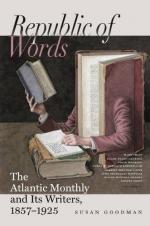of veterans, were so frightened, that, though they
ran away with the utmost celerity, they did not have
sense enough to run out of danger, but galloped along
the Highland line, and received its entire fire.
Some of the infantry were literally so swift to follow
the example of the cavalry, that the Highlanders believed
they were shamming, and so did not follow up their
success with sufficient promptitude to reap its proper
fruits. One of the regiments that ran was the
Scots Royals, seeing which, Lord John Drummond exclaimed,
“These men behaved admirably at Fontenoy:
surely this is a feint.” This suspicion
of the enemy’s purpose to entrap them actually
paralyzed the Highland army for so long a time that
the panic-stricken English were enabled for the most
part to escape; so that to the completeness of their
fright the English owed their power to rally their
army, which did not stop in its retreat until it reached
Edinburgh, the next day. In the same war, half
a dozen MacIntosh Highlanders, commanded by a blacksmith,
so acted as to throw fifteen hundred men, under Lord
Loudoun, into a panic, which caused them all to fly;
and though but one of their number was hurt by the
enemy, they did much mischief to themselves.
This incident is known as “The Rout of Moy,”
as Loudoun’s force was marching upon Moy Castle,
the principal seat of the MacIntoshes, for the purpose
of capturing Prince Charles Edward, who was the guest
of Lady MacIntosh, whose husband was with Lord Loudoun.
To render the mortification of the flying party complete,
the affair was suggested by a woman, Lady MacIntosh
herself.
“The Races of Castlebar” are very renowned
in the military history of Britain. In 1798 after
the Irish Rebellion had been suppressed, a small French
force was landed at Killala, under command of General
Humbert, and soon established itself in that town.
A British army, full four thousand strong, was assembled
to act against the invader, at the head of which was
General Lake, afterward Lord Lake,—elevated
to the peerage in reward of services performed in
India, and one of the most ruthless of those harsh
and brutal proconsuls employed by England to destroy
the spirit of the people of Ireland. The two armies
met at Castlebar, the French numbering only eight
hundred men, with whom were about a thousand raw Irish
peasants, most of whom had never had a musket in their
hands until within the few days that preceded the
battle,—races, we mean. A panic seized
the British army, and it fled from the field with
the swiftness of the wind, but not with the wind’s
power of destruction. The French had one small
gun,—the British, fourteen guns. Humbert
afterward kept the whole British force at bay for
more than a fortnight, and did not surrender until
his little army had been surrounded by thirty thousand
men. It is calculated that the British made the
best time from Castlebar that ever was made by a flying
army. It was no exaggeration to say that “the




